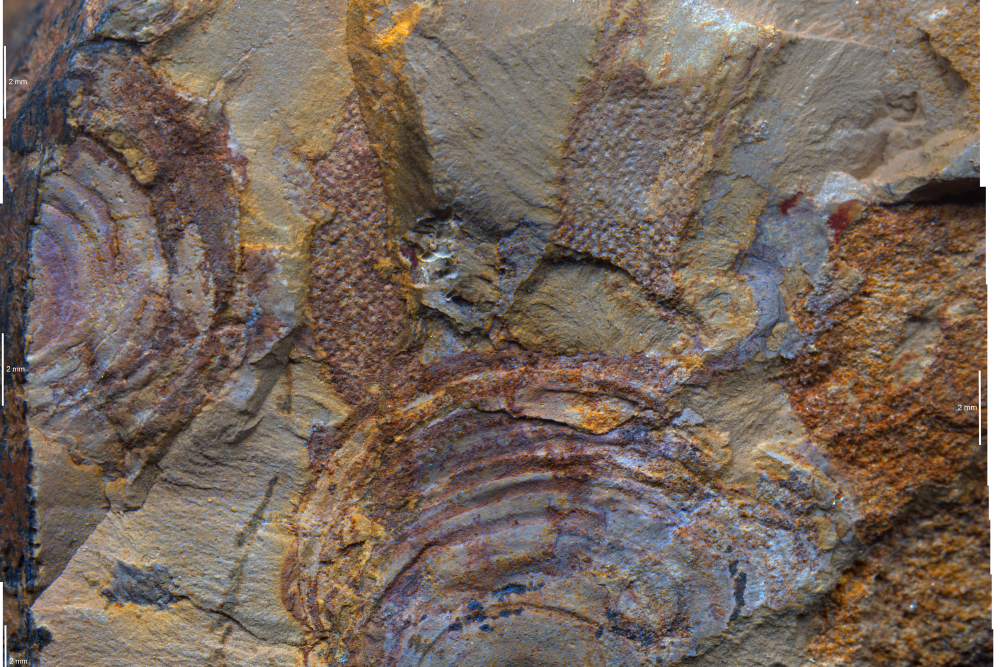Oldest fossils of mysterious animal group are really seaweeds, study suggests
The findings mean Bryozoans are millions of years younger than previously thought.

Your support helps us to tell the story
From reproductive rights to climate change to Big Tech, The Independent is on the ground when the story is developing. Whether it's investigating the financials of Elon Musk's pro-Trump PAC or producing our latest documentary, 'The A Word', which shines a light on the American women fighting for reproductive rights, we know how important it is to parse out the facts from the messaging.
At such a critical moment in US history, we need reporters on the ground. Your donation allows us to keep sending journalists to speak to both sides of the story.
The Independent is trusted by Americans across the entire political spectrum. And unlike many other quality news outlets, we choose not to lock Americans out of our reporting and analysis with paywalls. We believe quality journalism should be available to everyone, paid for by those who can afford it.
Your support makes all the difference.A new study has revealed that a group of mysterious prehistoric sea creatures are not as ancient as scientists thought, as their earliest fossils are actually seaweeds.
Research carried out by experts from Durham University, and Yunnan University and Guizhou University in China found that the fossils – previously thought to be the oldest Bryozoans – are in fact green algae.
The findings mean Bryozoans – tentacle-bearing animals that lived in skyscraper-like underwater colonies – are millions of years younger than previously thought.
But if Bryozoans truly evolved after the Cambrian period, it shows that evolution kept its creative touch after this critical period of innovation
They appeared only in the Ordovician period (480 million years ago), making them the only group of fossil animals not to appear in the Cambrian “explosion”, a rapid burst of evolution 40 million years earlier.
Researchers suggest the delayed appearance of the creatures shows the Cambrian was not a unique period of innovation as conventionally thought.
Instead, new body plans continued to be carved out by evolution over a much longer time period.
Study co-author Dr Martin Smith, of the Department of Earth Sciences, Durham University, said: “We tend to think of the ‘Cambrian explosion’ as a unique period in evolutionary history, in which all the blueprints of animal life were mapped out.
“Most subsequent evolution boils down to smaller-scale tinkering on these original body plans.
“But if Bryozoans truly evolved after the Cambrian period, it shows that evolution kept its creative touch after this critical period of innovation – maybe the trajectory of life was not set in stone half a billion years ago.”
Instead of the tentacles we would expect to see in Bryozoans, we discovered simple leaf-like flanges – and realised we were not looking at fossil animals, but seaweeds
The ancient fossil material was discovered in the hills of China, and revealed previously unseen “soft parts” of Protomelission gateshousei, formerly believed to be the earliest Bryozoan.
This fragile tissue allowed the researchers to interpret Protomelission as a member of the green algal group Dasycladales.
Study co-author Professor Zhang Xiguang, of Yunnan University, said: “Where previous fossils only preserved the skeletal framework of these early organisms, our new material revealed what was living inside these chambers.
“Instead of the tentacles we would expect to see in Bryozoans, we discovered simple leaf-like flanges – and realised we were not looking at fossil animals, but seaweeds.
“This means that the oldest convincing Bryozoan fossils do not evolve until the next geological period, the Ordovician.”
The researchers suggest while the origin of animal groups may not have been so sudden, humble seaweeds played a larger part in the early oceans than previously thought.
The findings are published in the Nature journal.